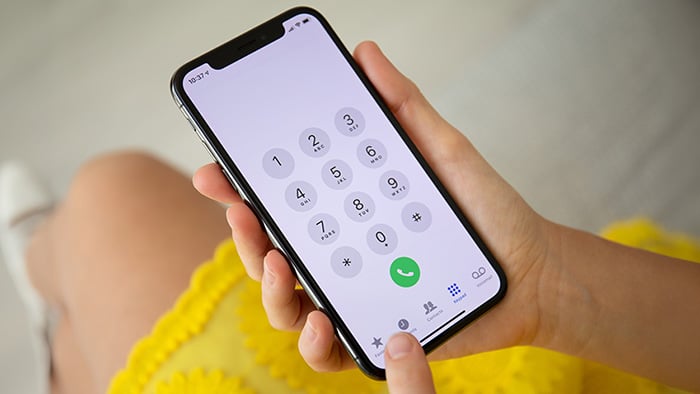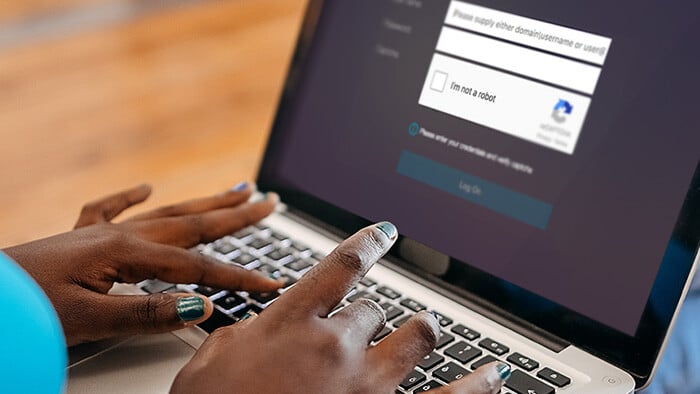How a USPS text scam works
United States Postal Service (USPS) scams usually start with a fake text message about a delivery issue with a request for personal information, a redelivery fee, or a link to a scam website. If you receive a USPS text message like this and you aren’t expecting a delivery, it’s likely a scam.
USPS Informed Delivery scams
USPS Informed Delivery scams take advantage of the USPS mail previewing feature that lets customers see a picture of their mail, reschedule deliveries, leave delivery instructions, and view the tracking history of packages.
In USPS Informed Delivery scams, fraudsters sign up for the Informed Delivery service using the details of their victims. They then use the preview feature to identify and intercept valuable mail, such as a fraudulent credit card they signed up for using the victim’s details.
How to figure out if a US Postal Service text message is a scam
You can spot a USPS text scam by looking for grammatical mistakes, urgent requests for personal information, and missing tracking numbers. Legitimate USPS texts will always include your tracking number, which you can double-check on their official website.
Similarly, if you know that you haven't ordered a package recently or you're not expecting a redelivery attempt, receiving a USPS tracking delivery text is a sure sign of a scam.
USPS scam texts follow many of the same patterns as PayPal scams, phishing attacks, and even scams on Instagram — they all use social engineering tactics to try and trick you into clicking malicious links or providing personal details.
Signs that a text is USPS scam text
-
No tracking number, or a fake one that doesn’t exist on the official USPS website
-
A sense of urgency to share personal info, like your address
-
Spelling, grammar, or other language mistakes
-
It contains a link — USPS will never include a link in a text
-
Demands for redelivery fees for a package (USPS doesn’t charge a fee for redelivery)
Does USPS send text messages?
The USPS does send text messages to users who have signed up to track a specific package. The USPS Text Tracking phone number is 28777 (2USPS). You can find info about USPS Text Tracking online or by calling 1-800-222-1811.
Here’s some information that legitimate USPS text messages typically contain:
-
Tracking number
-
Sender (from USPS)
-
Status (Available for Pickup, Delivered)
-
Date, time, and/or location information
-
Instructions for how to stop text updates

What does a USPS text scam look like
USPS scam texts look like many other phishing scams. The following USPS smishing (SMS phishing) example contains a link using USP instead of USPS, grammatical and capitalization mistakes, and a request for personal information. USPS never includes a link in tracking texts, so if there’s a link it’s a fake text.

So, how to know if a USPS text is real? Your USPS text is likely real if you’re expecting a package or redelivery, there’s no link, the tracking number is on the USPS website, and it's free of mistakes.
USPS text scams in the news
USPS text scam warnings are a frequent item in the news. Here are some examples:
A USPS text scam warning video by the US Postal Inspection Service.
How to protect yourself from USPS scams
To protect yourself from USPS scams, don’t engage with suspicious texts in any way. This means no replying to or clicking links. Always think before you act and double-check details like the tracking number.
The best ways to protect yourself from USPS scams include:
-
Think before you act.
Even if you’ve registered for USPS Text Tracking notifications, check the sender’s identity online before you do anything more.
-
Don't click suspicious links or attachments.
Clicking links inside a USPS scam text message may install a virus or other malware on your device. If you accidentally click, run a malware scan immediately.
-
Don’t reply.
Replying can help scammers verify that your number is active. Instead, delete all spam text messages and block the senders.
-
Check your phone bill.
If you’ve received an influx of scam texts or spam recently, check your phone bill for extra charges. Strange transactions could mean someone spoofed your phone number.
-
Install an anti-malware tool.
Install a trusted antivirus tool to help catch threats hiding on your device and protect against malicious links and downloads often hidden in scam texts.
What happens if you click a scam text link?
If you open a scam text link only to realize it’s not an actual tracking link, run a virus removal scan to ensure you didn’t accidentally download malware. To help protect your device against malicious scam links in the future, install an all-in-one antivirus and security tool like Avast Free Antivirus.
 If you open a link in a scam USPS text, run a malware removal scan and install antivirus software.
If you open a link in a scam USPS text, run a malware removal scan and install antivirus software.
How to report a USPS scam text
You can report a scam text message to the US Postal Inspection Service by emailing spam@uspis.gov or by forwarding the text to 7726.
Other ways you can report a scam include:
Reporting scams can help the authorities warn other people and stop them from becoming scam victims.
Protect yourself with Avast
As digital communication grows, so do the scams that go along with it. Avast Free Antivirus alerts you if your accounts are connected to known data breaches, helping to give you time to change your passwords before real damage can be done.
Better yet, Avast's free antivirus helps protect your device in real time by detecting and blocking malicious downloads and websites that may be linked in scam messages. Get powerful protection for your device, accounts, and personal data with Avast.





 If you open a link in a scam USPS text, run a malware removal scan and install antivirus software.
If you open a link in a scam USPS text, run a malware removal scan and install antivirus software.










